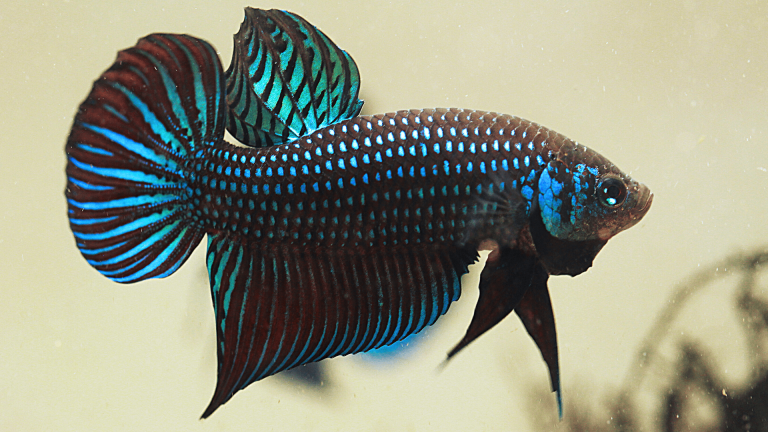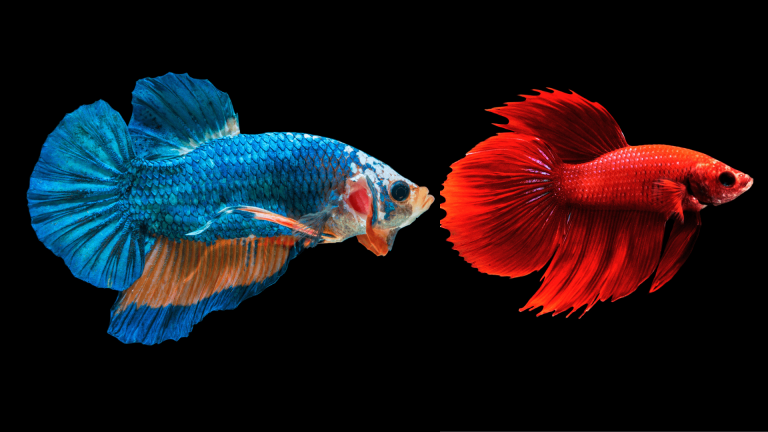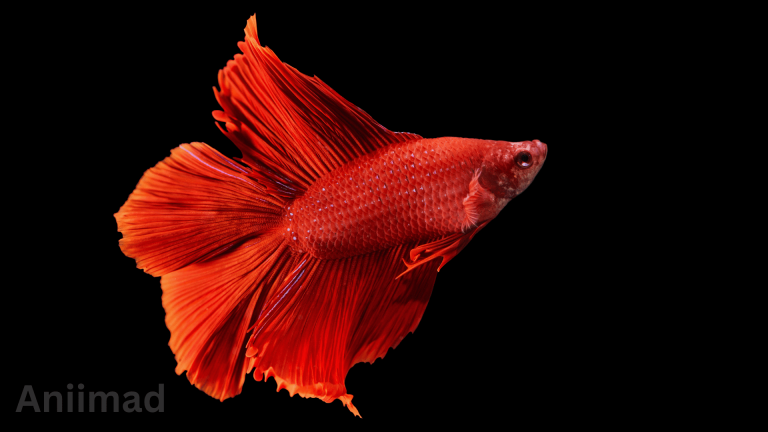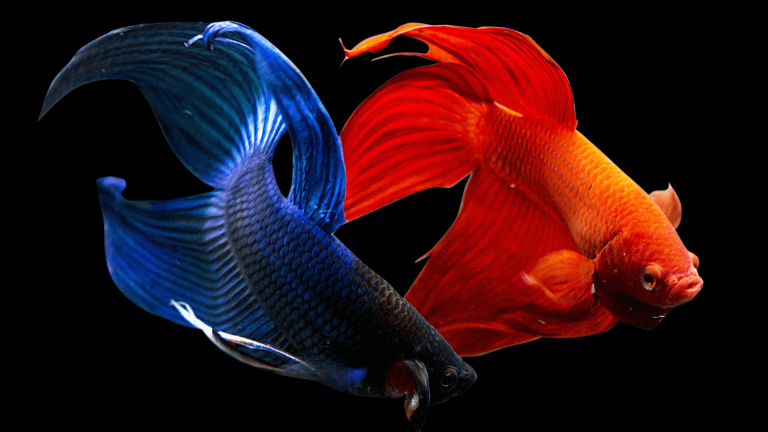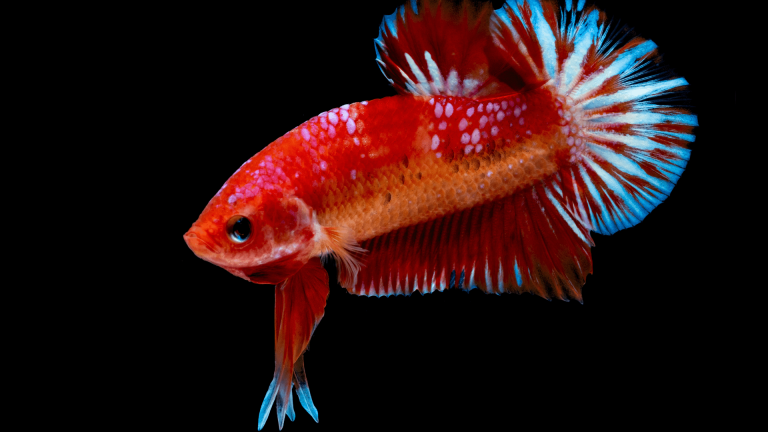Do Guppies Eat Algae?: Unraveling the Mystery
Are you a proud owner of guppies or considering bringing them into your aquarium? One of the common questions that arise is, “Do Guppies Eat Algae?” In this informative article, we will delve into this intriguing question and provide you with in-depth insights, expert opinions, and answers to frequently asked questions about guppies and their algae-eating habits.
Do Guppies Eat Algae?

Guppies are among the most popular and easily recognizable fish species in the world of aquariums. Their vibrant colors and playful nature make them a favorite among both experienced and novice hobbyists. If you’re a guppy owner or are considering becoming one, you might wonder about the dietary habits of these little aquatic gems, specifically whether they eat algae.
Understanding Guppies
Guppies, scientifically known as Poecilia reticulata, are a captivating and popular species of freshwater fish that have earned their place as one of the most beloved aquarium inhabitants. To truly appreciate these fascinating creatures, it’s essential to delve into a deeper understanding of their origins, characteristics, and the unique qualities that make them a favorite among aquarists.
Origin and Natural Habitat
Guppies are native to the tropical regions of South America, primarily found in countries such as Venezuela, Guyana, and Trinidad and Tobago. Their natural habitat consists of slow-moving streams, ponds, and small water bodies within dense vegetation. These aquatic environments are typically warm, with temperatures ranging from 75°F to 82°F (24°C to 28°C), creating an ideal setting for these fish to thrive.
Physical Characteristics
Guppies are renowned for their striking appearance. Males, in particular, exhibit vibrant colors and intricate patterns that can vary significantly from one individual to another. Their tails and fins often feature a stunning array of hues, including shades of red, blue, green, yellow, and black. This remarkable coloration is not just for aesthetics; it serves as a crucial element in their survival and mating strategies.
Females, on the other hand, are generally less colorful and possess a more subdued appearance. This difference in appearance between the sexes, known as sexual dimorphism, plays a pivotal role in the reproductive behavior of guppies.
Social Behavior
Guppies are social and gregarious fish that thrive when kept in groups. They are known for their playful and active nature, constantly exploring their environment. This sociable behavior makes them a delightful addition to any aquarium, as they interact with each other and their surroundings. They are also known to display fascinating courtship and mating rituals, which add to the intrigue of observing them in a well-maintained tank.
Reproduction and Live-Bearing Nature
One of the most captivating aspects of guppies is their live-bearing nature. Unlike many fish species that lay eggs, guppies give birth to live fry. This reproductive strategy contributes to the success and rapid population growth of guppy colonies in the wild and in captivity.
Male guppies employ their vibrant colors and elaborate fin displays during courtship to attract females. Once mating occurs, the female carries the developing embryos within her body. The gestation period varies but typically lasts around three to four weeks. After this period, female guppies release fully-formed, miniature versions of themselves into the tank, which are known as fry.
Hardy and Adaptable
Guppies are renowned for their hardiness and adaptability. They can thrive in a wide range of water conditions and are often recommended for beginner aquarists. Their ability to endure fluctuations in temperature and water parameters makes them resilient in various aquarium setups. However, it’s important to note that while they can tolerate less-than-ideal conditions, providing them with an optimal environment ensures their long-term health and vibrancy.
Low Maintenance
Low maintenance requirements make guppies an excellent choice for aquarium enthusiasts of all experience levels. They do not demand intricate care or expensive equipment, and their adaptability allows them to flourish in different tank sizes and setups. Nevertheless, providing clean water, suitable water parameters, and a balanced diet remains crucial to their well-being.
The Diet of Guppies

Guppies, those colorful and lively little fish that grace many aquariums, have dietary needs that are crucial to their overall health and vibrancy. To understand how to properly care for these charming aquatic pets, it’s important to explore the intricacies of their diet and the types of food that support their well-being.
Omnivorous Nature
Guppies are classified as omnivores, meaning they consume a varied diet that includes both plant and animal matter. Their omnivorous nature reflects their adaptation to a diverse range of food sources in their natural habitat, which includes South American streams, ponds, and slow-moving waters.
Natural Diet
In the wild, guppies feed on a wide array of small aquatic organisms, including tiny invertebrates, zooplankton, and algae. Their diet also includes small insects and larvae that happen to fall into the water. This diversity of food sources ensures they receive the essential nutrients required for their survival.
Captive Diet
When kept in an aquarium, guppies thrive on a diet that replicates their natural food sources as closely as possible. Providing them with a balanced and nutritious diet is essential for their health and overall vitality.
Commercial Guppy Food
High-quality commercial guppy food is readily available in the form of pellets or flakes. These specially formulated foods contain the necessary nutrients, vitamins, and minerals to meet the dietary requirements of guppies. It’s recommended to provide this as the primary component of their diet.
Live or Frozen Food
To provide a varied and well-rounded diet, consider supplementing their meals with live or frozen food. Guppies particularly enjoy live options such as daphnia, brine shrimp, and bloodworms. These protein-rich treats not only add diversity to their diet but also contribute to their overall health and vibrancy.
Algae Wafers and Spirulina-Based Food
As mentioned earlier, guppies are known to graze on algae. To support this natural behavior, offering them algae wafers or spirulina-based food occasionally is beneficial. This allows them to fulfill their algae-eating tendencies, contributing to their overall well-being.
Feeding Frequency
Feeding guppies should be a regular but controlled practice. Overfeeding can lead to excess waste and water quality issues in the aquarium, so it’s important to establish a feeding routine. Generally, feeding them once or twice a day in small portions is sufficient. It’s important to observe the fish during feeding to ensure they consume all the food provided within a few minutes. Any uneaten food should be promptly removed from the tank to maintain water quality.
Do Guppies Eat Algae?
Yes, guppies do eat algae. Algae are a natural part of their diet, and they’ll graze on it when it’s available in their tank. Algae growth can help replicate their natural environment, creating a healthier and more engaging living space for your guppies.
Benefits of Algae in Guppy Tanks

Algae, often considered a nuisance by many aquarium enthusiasts, can actually play a valuable role in guppy tanks. While excess algae can be problematic, controlled growth offers a range of benefits that contribute to the overall health and well-being of guppies and the aquatic ecosystem they inhabit.
1. Oxygen Production
Algae are primary producers that engage in photosynthesis, converting light energy into oxygen. This is particularly beneficial for the fish in the tank, including guppies. Adequate oxygen levels are vital for respiration, ensuring that your guppies have a constant supply of oxygen to support their metabolic processes.
2. Mimicking Natural Habitat
Algae-covered surfaces in the tank closely mimic the guppies’ natural habitat, which often includes water bodies with abundant aquatic plant life. The presence of algae provides hiding places and shelter for both adult guppies and their fry (baby guppies). It creates a more natural and engaging environment for these fish, reducing stress and promoting their overall well-being.
3. Water Filtration
Algae play a significant role in maintaining water quality within the aquarium. They act as natural filters, absorbing excess nutrients, particularly nitrates and phosphates, from the water. By doing so, algae help prevent the accumulation of these harmful compounds that can negatively affect the health of guppies and other tank inhabitants.
4. Aesthetic Appeal
Well-maintained algae growth can enhance the aesthetic appeal of your guppy tank. Algae-covered surfaces often display vibrant green hues that many aquarists find visually appealing. It adds a natural and attractive look to the aquarium, creating an environment that’s not only healthy but also visually engaging.
5. Food Source
While guppies are primarily omnivores, they do have a natural inclination to graze on algae. When algae are present in the tank, guppies will readily consume it. This natural food source can supplement their diet, providing additional nutrients and variety. It also satisfies their natural instincts, contributing to their overall health and well-being.
6. Fry Protection
Algae can serve as hiding places for guppy fry, which are particularly vulnerable to predation in their early stages. The dense growth of algae provides shelter for these young fish, increasing their chances of survival. This is particularly valuable if you intend to breed guppies within your aquarium.
7. Nutrient Control
Algae growth competes with other potential nuisance algae, such as blue-green algae or hair algae, for nutrients in the water. By allowing beneficial algae to flourish, you can help keep less desirable algae species in check, reducing the risk of imbalances in the tank’s ecosystem.
8. Educational Value
For those with an interest in the natural world, cultivating algae in your guppy tank can serve as an educational opportunity. Observing the interactions between guppies and algae can provide insights into the natural behaviors and dependencies of these aquatic creatures.
How to Encourage Algae Growth

Encouraging controlled algae growth in your guppy tank can provide several benefits, as discussed in the previous section. However, it’s important to maintain a balance to prevent excessive growth. Here are some strategies to promote healthy algae growth in your aquarium:
1. Light Duration
Algae thrive in well-lit conditions. Adjust the duration of light in your aquarium to promote algae growth. Use a timer to ensure consistent lighting, typically 10-12 hours a day. Avoid excessive or direct sunlight, as it can lead to undesirable algae species or an overgrowth of beneficial algae.
2. Nutrient Levels
Algae often proliferate when there are excess nutrients in the water, such as nitrates and phosphates. Regular water testing can help you monitor nutrient levels. If they are consistently low, consider using a high-quality aquarium fertilizer to provide essential nutrients to both your plants and algae.
3. Natural Decor
Incorporate natural decor elements in your aquarium, such as rocks, driftwood, or live plants. These surfaces provide ideal growing conditions for algae. Guppies will graze on algae that grows on these surfaces, helping to maintain a balanced ecosystem.
4. Controlled Feeding
Be mindful of your guppies’ feeding habits. While they enjoy consuming algae, overfeeding can lead to excess waste and uncontrolled algae growth. Follow a regular feeding schedule and ensure that your fish consume all the food within a few minutes. Remove any uneaten food promptly to maintain water quality.
5. Algae Wafers or Spirulina Tablets
As mentioned earlier, offering algae wafers or spirulina-based tablets occasionally can be an effective way to supplement your guppies’ diet and encourage algae growth. These specially formulated foods can be found in most pet stores and provide guppies with an additional source of algae-based nutrients.
6. Water Quality Maintenance
Maintaining good water quality is essential for controlled algae growth. Perform regular water changes, typically 10-20% of the tank volume every one to two weeks. This helps remove excess nutrients and maintains a healthy environment for your guppies and the algae.
7. Avoid Chemical Algaecides
Avoid using chemical algaecides or treatments to control algae. While these products can effectively eliminate algae, they can also harm your guppies and disrupt the overall ecosystem of the tank. It’s best to rely on natural methods to manage algae growth.
8. Monitor and Adjust
Consistently monitor the growth of algae in your aquarium. Ensure it remains at a level that benefits your guppies without becoming a nuisance. If you notice excessive algae growth or the presence of undesirable algae species, consider adjusting your lighting duration and nutrient levels accordingly.
Balancing Guppy Diet

Balancing the diet of your guppies is essential to ensure their health and well-being. While guppies are omnivorous and can consume a variety of foods, it’s crucial to provide them with a balanced and nutritious diet that meets their dietary requirements. Here are some key considerations for maintaining a well-balanced guppy diet.
1. Variety is Key
Guppies thrive when offered a diverse diet that includes a range of foods. A varied diet helps ensure they receive all the essential nutrients they need for optimal health. Include different types of food, such as commercial guppy food, live or frozen options, and algae-based offerings.
2. Commercial Guppy Food
High-quality commercial guppy food, available in the form of pellets or flakes, serves as the primary component of their diet. These specially formulated foods are designed to provide the essential vitamins and minerals guppies require. Choose a reputable brand and ensure it is appropriate for the life stage of your guppies (e.g., adult, juvenile, or fry).
3. Live or Frozen Food
Supplementing your guppies’ diet with live or frozen food is essential. Guppies particularly enjoy options like daphnia, brine shrimp, and bloodworms. These foods are protein-rich and help diversify their diet. You can find these foods in most pet stores or consider cultivating your own live food sources.
4. Algae Wafers and Spirulina-Based Food
To support their natural algae-eating tendencies, provide algae wafers or spirulina-based food occasionally. This helps guppies fulfill their instinctual need to graze on algae and provides additional nutrients to their diet.
5. Controlled Feeding
Establish a regular feeding schedule to prevent overfeeding. Guppies are enthusiastic eaters, but overfeeding can lead to excess waste and negatively impact water quality. Feed them once or twice a day in small portions, and ensure they consume all the food within a few minutes.
6. Observing Feeding Behavior
While feeding, pay attention to the behavior of your guppies. Ensure that all fish have access to food and are actively feeding. Some guppies may be more dominant and may outcompete others during feeding. If you notice any guppies consistently not getting enough food, consider adjusting the feeding process to ensure all fish receive their fair share.
7. Avoiding Empty Stomachs
Guppies have fast metabolisms, and it’s important to ensure they have access to food regularly. While they can go without food for a day or two, it’s best to avoid extended periods of fasting. Providing a consistent food source helps maintain their energy levels and overall health.
8. Monitoring Body Condition
Regularly monitor the body condition of your guppies. A healthy guppy should have a streamlined body with a slight roundness, indicating a well-fed and healthy fish. If you notice any fish becoming overly thin or bloated, it may be a sign of dietary issues that require adjustments.
9. Special Considerations for Fry
If you’re breeding guppies and have fry in the tank, consider providing powdered or crushed food that is appropriate for their small size. Fry have different dietary needs than adults and require smaller and more easily digestible food particles.
Guppy Feeding Guidelines

Feeding your guppies is a fundamental aspect of their care, and following proper feeding guidelines is essential to ensure their health, vitality, and vibrant appearance. Guppies are omnivorous fish, which means they require a balanced diet that includes a variety of food sources. Here are some feeding guidelines to help you keep your guppies in optimal condition:
1. High-Quality Commercial Guppy Food
The foundation of your guppies’ diet should consist of high-quality commercial guppy food. Guppy-specific pellets or flakes are formulated to provide essential nutrients, vitamins, and minerals tailored to their dietary requirements. Choose a reputable brand and consider the life stage of your guppies (adult, juvenile, or fry) when selecting the appropriate food.
2. Feeding Schedule
Establish a regular feeding schedule to maintain consistency and prevent overfeeding. Guppies are enthusiastic eaters, and a controlled feeding regimen ensures they consume an appropriate amount of food. Typically, feeding them once or twice a day is sufficient.
3. Portion Control
Offer food in small portions that your guppies can consume within a few minutes. Overfeeding can lead to excess waste and negatively impact water quality in the aquarium. Observing the fish during feeding helps you gauge the right portion size.
4. Variety is Key
Guppies thrive on a varied diet. In addition to commercial guppy food, consider supplementing their diet with live or frozen foods. Variety not only provides a broader range of nutrients but also keeps your guppies engaged and satisfied.
5. Live and Frozen Foods
Guppies relish live and frozen foods, which mimic their natural diet. Options such as daphnia, brine shrimp, and bloodworms are protein-rich and offer nutritional benefits. These foods can be offered a few times a week to diversify their diet.
6. Algae Wafers and Spirulina-Based Foods
To support their algae-eating tendencies, consider offering algae wafers or spirulina-based foods occasionally. These items provide an additional source of nutrients and help fulfill their natural instinct to graze on algae.
7. Avoid Overfeeding
Be cautious not to overfeed your guppies. Uneaten food can lead to water quality issues and negatively affect the health of your fish. If you notice that food is left uneaten after a few minutes, reduce the portion size in future feedings.
8. Monitor Feeding Behavior
During feeding sessions, observe the behavior of your guppies. Ensure that all fish have access to food and are actively feeding. Dominant individuals may monopolize the food, leaving more submissive guppies underfed. If this occurs, consider using feeding rings to distribute food more evenly.
9. Consider the Needs of Fry
If you’re breeding guppies and have fry in the tank, provide appropriate food for their small size. Powdered or crushed food is better suited to their tiny mouths and ensures they receive the nutrition required for growth.
10. Water Quality
Maintaining good water quality is integral to the overall health of your guppies. Excess food that decays in the tank can lead to water quality issues. Regularly remove any uneaten food to prevent it from decomposing and affecting the water parameters.
The Risks of Algae Overgrowth
While some algae is beneficial, excessive algae growth can pose risks to your aquarium. It can deplete oxygen, limit visibility, and affect the overall aesthetics of the tank. Regular maintenance is necessary to prevent overgrowth.
Maintaining a Healthy Aquarium
To maintain a healthy aquarium for your guppies and other fish, regular cleaning, water changes, and monitoring water parameters are crucial. This will ensure a thriving ecosystem and happy, colorful guppies.
Frequently Asked Questions (FAQs) About Do Guppies Eat Algae?

Can guppies survive solely on algae?
While guppies can eat algae, they require a more diverse diet for optimal health. Algae should be just one component of their diet.
Are there specific types of algae that guppies prefer?
Guppies generally consume various types of algae, so you don’t need to be too specific. Any type of algae that grows in your tank will likely be appreciated by your guppies.
Should I allow algae to grow unchecked in my guppy tank?
No, uncontrolled algae growth can harm the tank’s ecosystem, impacting water quality and aesthetics. It’s essential to strike a balance and perform regular maintenance.
How often should I feed my guppies algae?
Offering algae as part of their diet a few times a week is sufficient. It can be a supplemental treat rather than a primary food source.
Can guppies eat all types of algae?
Guppies can consume many types of algae, but some may be more nutritious than others. It’s a good practice to provide a variety of algae and other foods to ensure they receive a well-rounded diet.
Conclusion
In conclusion, guppies do eat algae and benefit from its presence in their tank. It contributes to their well-being and the overall health of the aquarium ecosystem. However, it’s vital to strike a balance and maintain good tank hygiene. So, go ahead and let your guppies enjoy their natural algae snacks, but keep a watchful eye on their environment.

